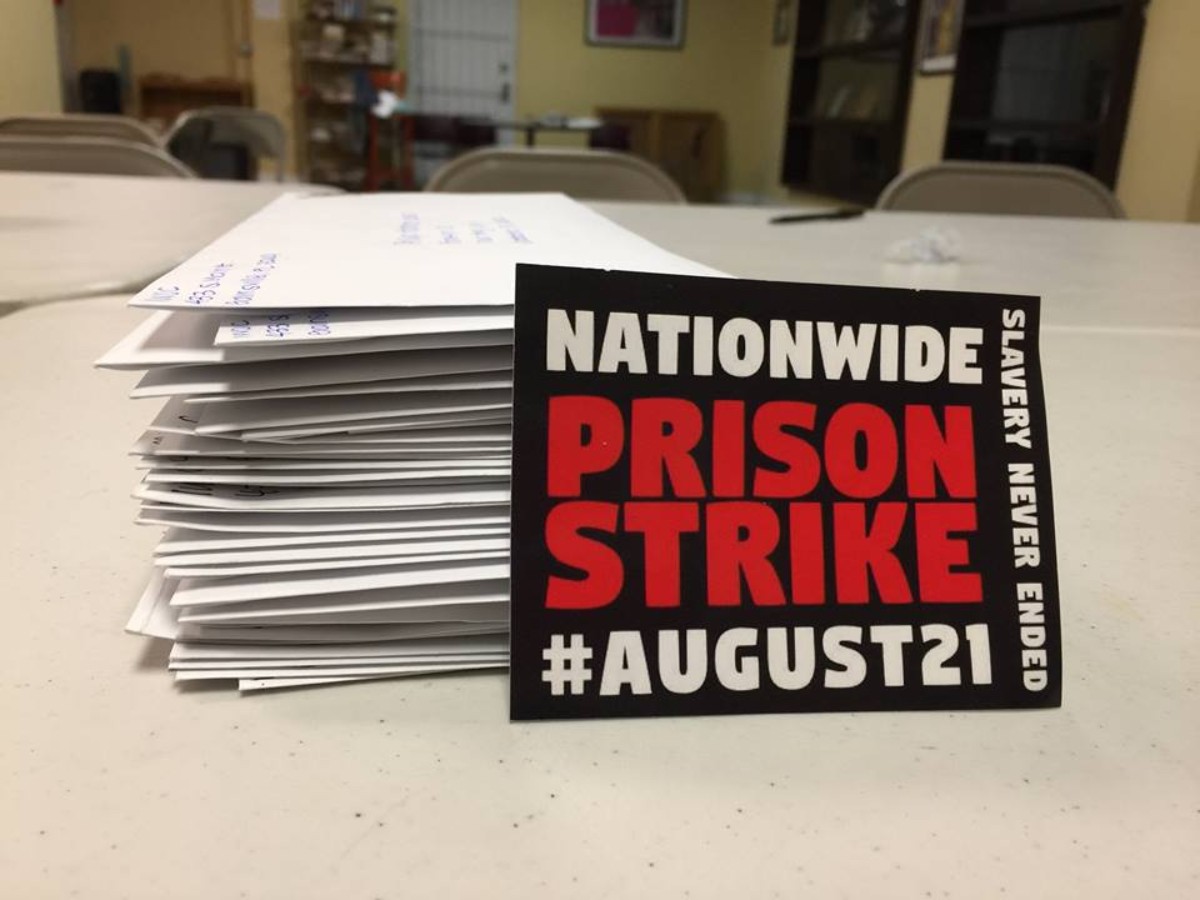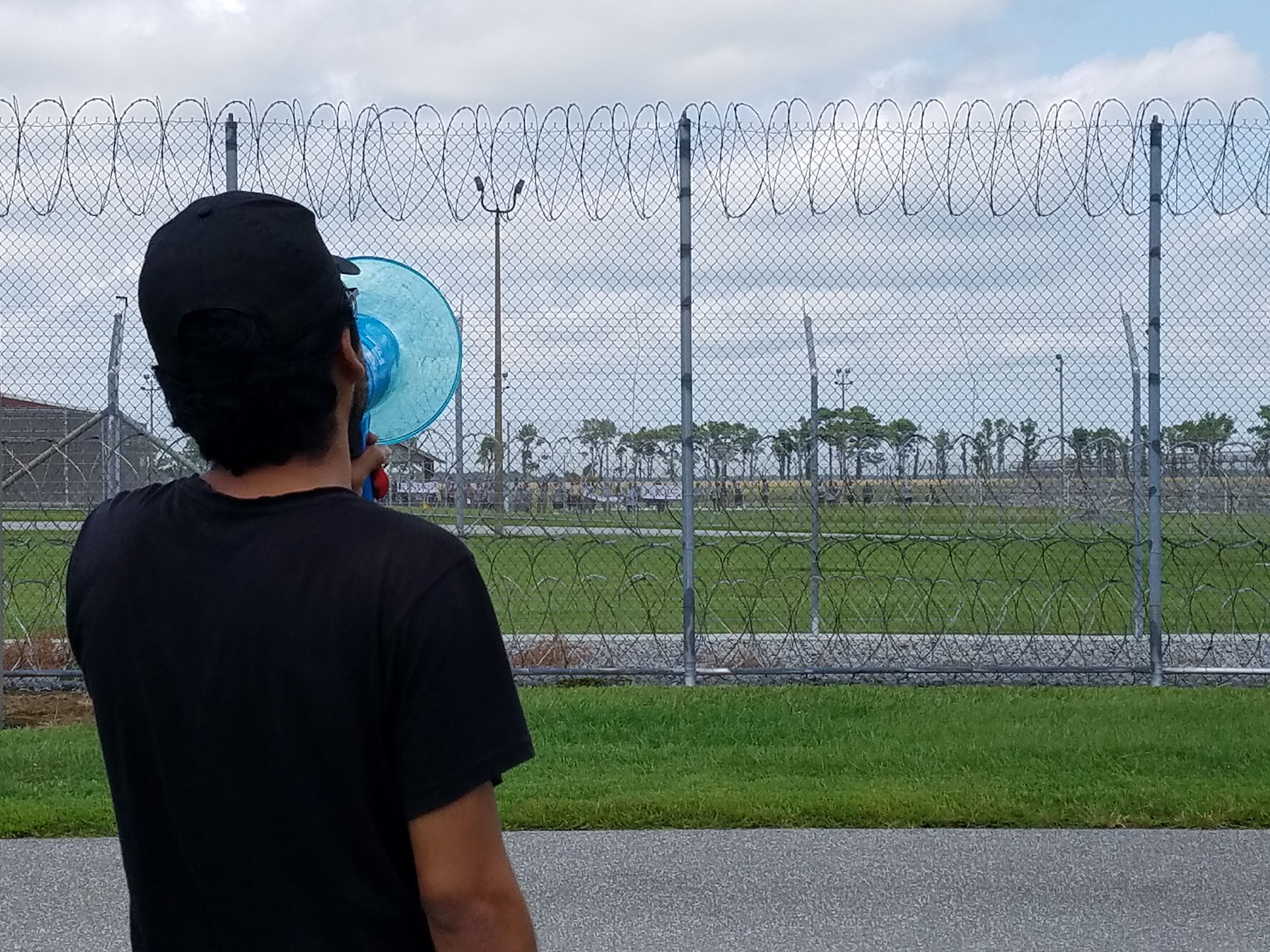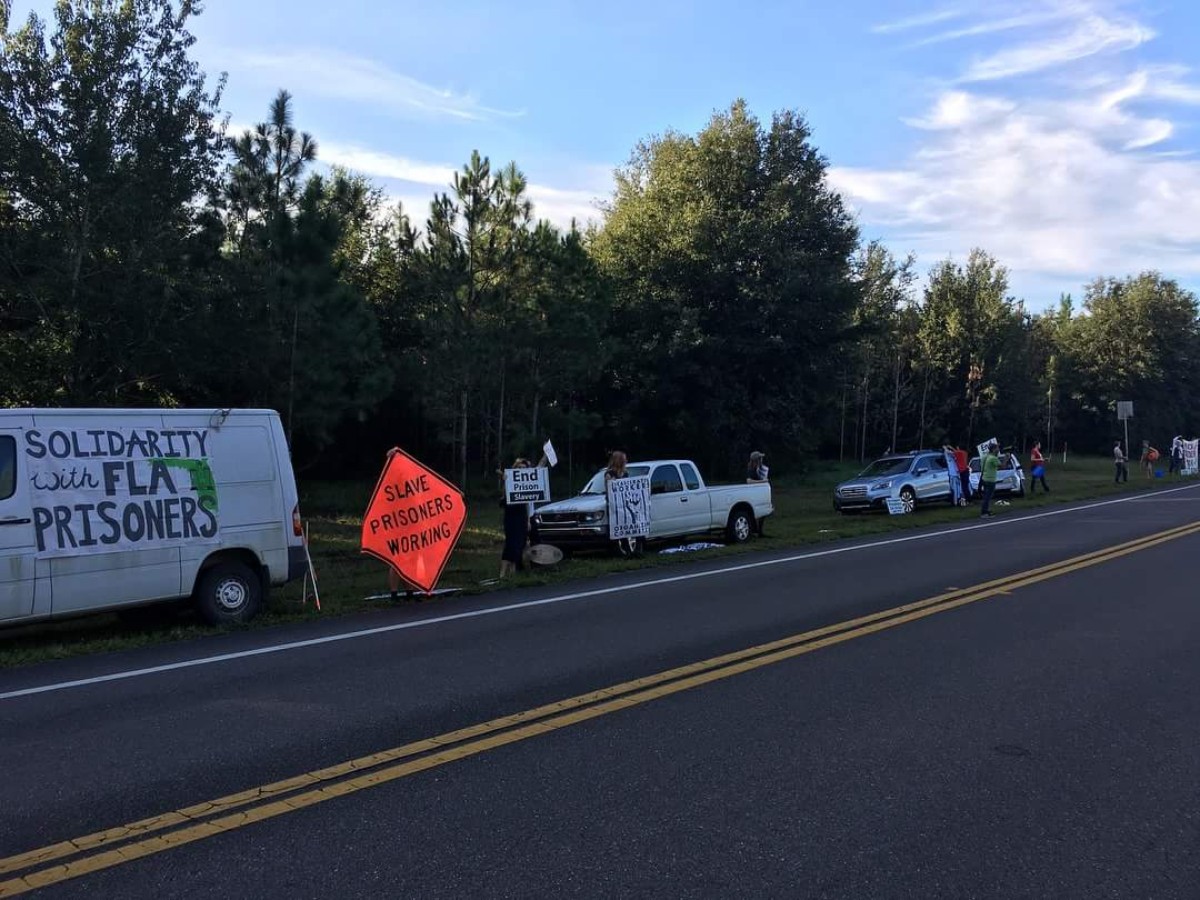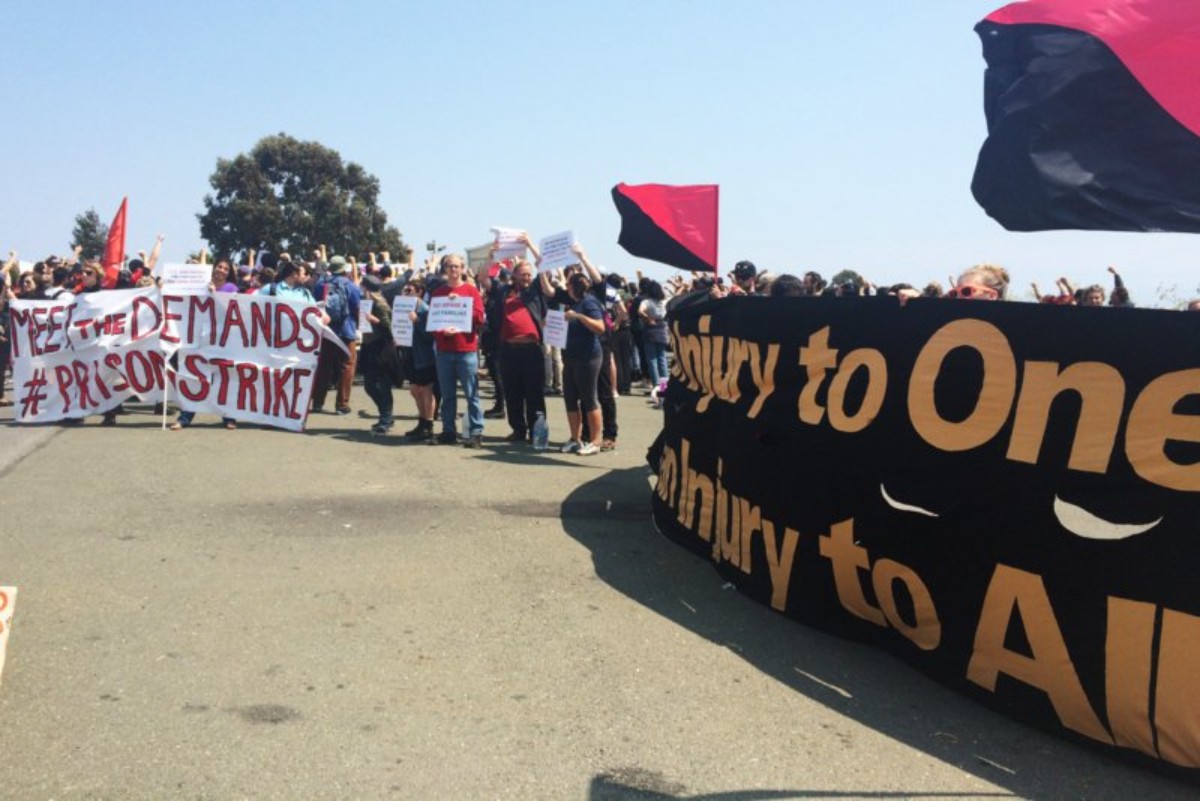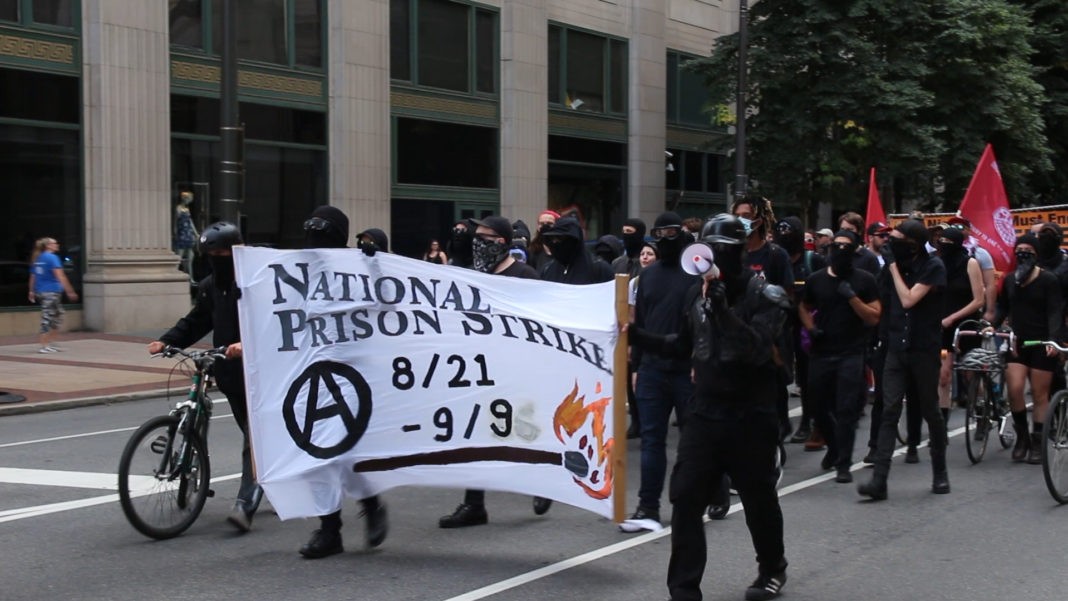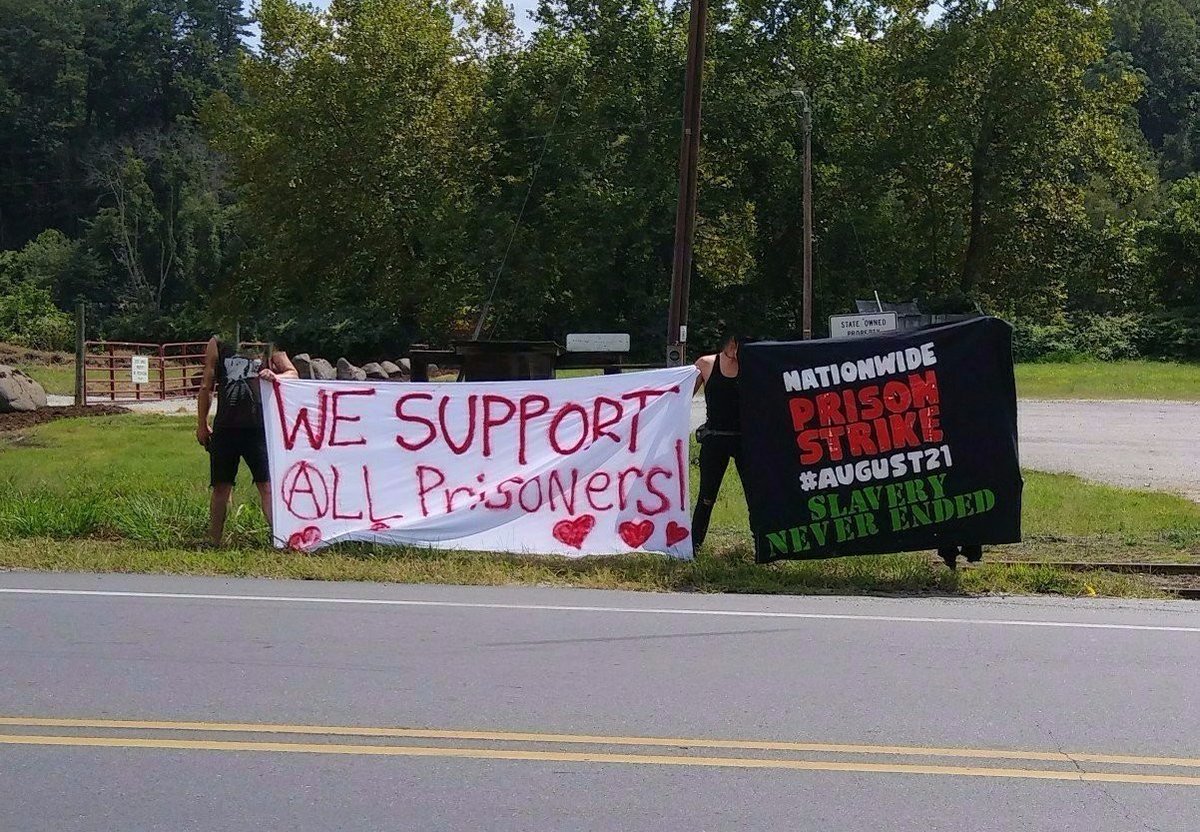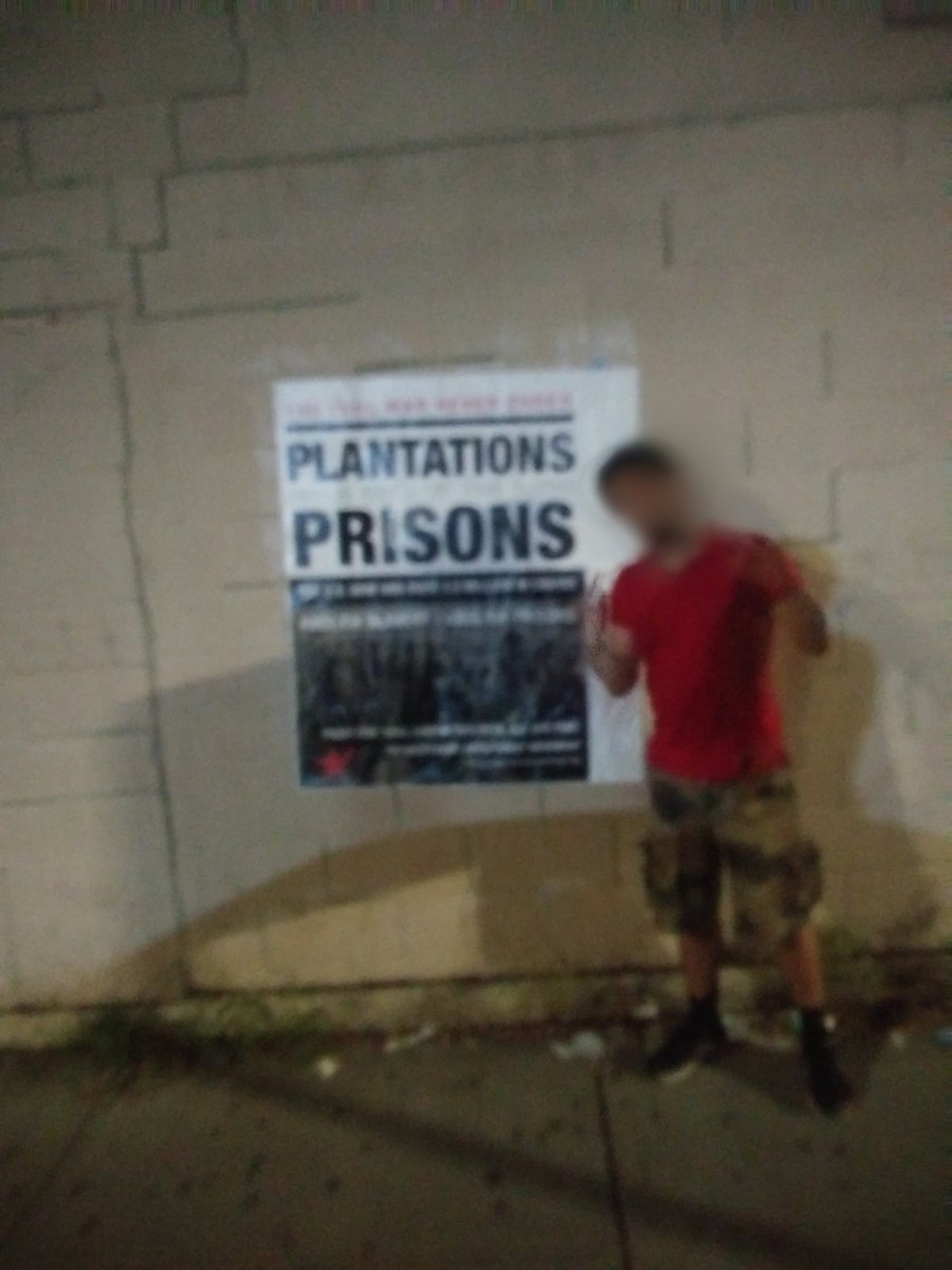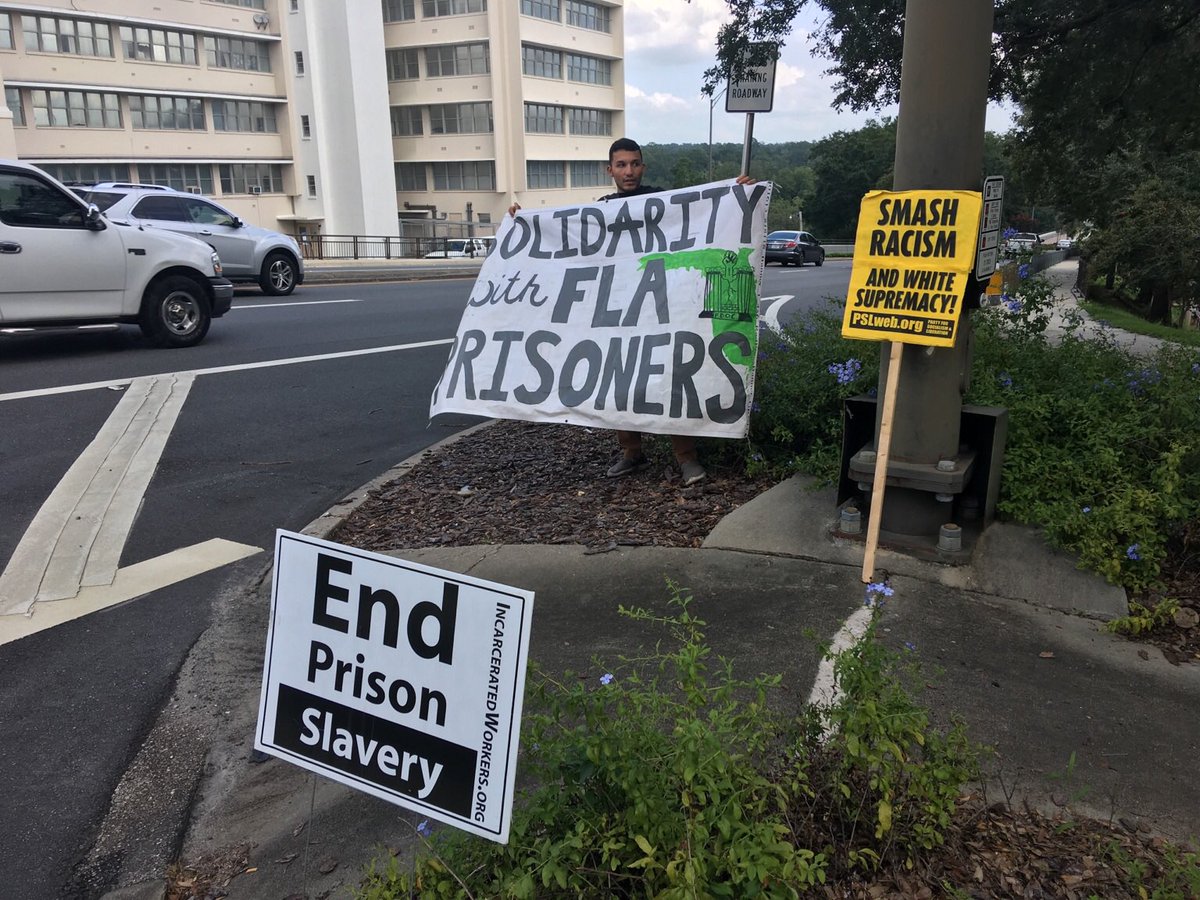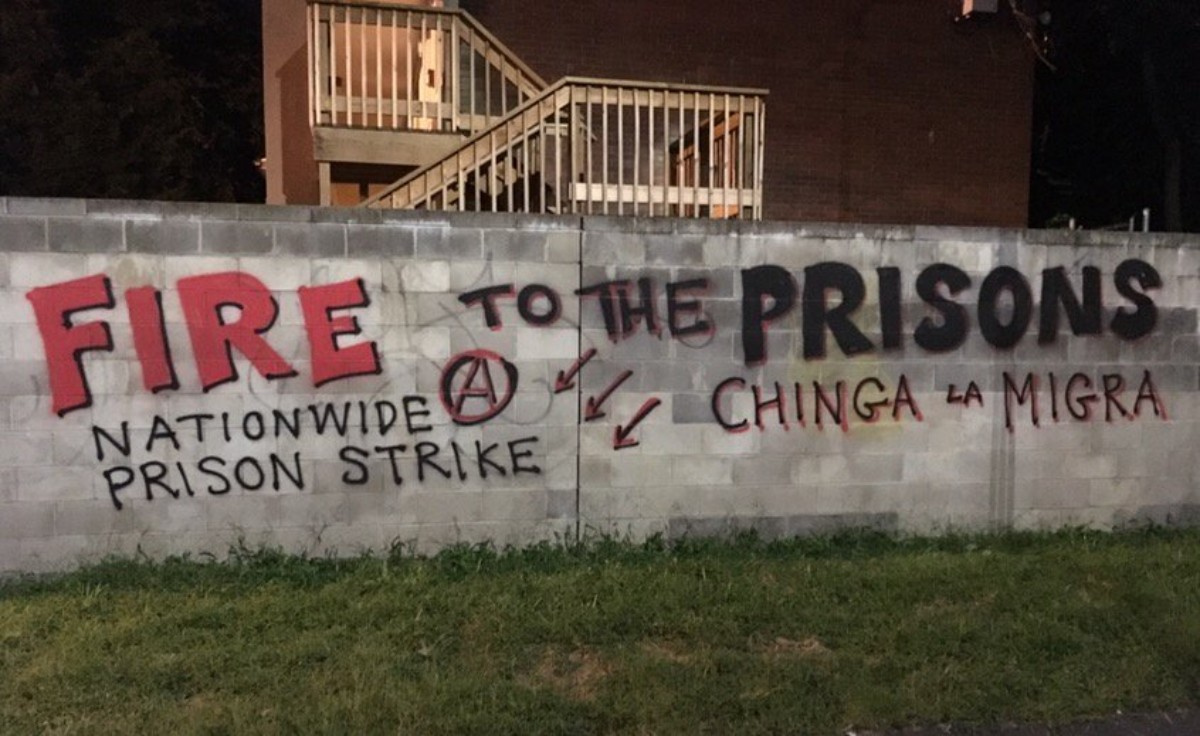Filed under: Analysis, Anarchist Movement, Featured, Incarceration, US

Cover photo: Prisoners bang on windows as noise demo takes places in Richmond, Virginia.
One week into the National Prison Strike and already history has been made. Even in the face of massive repression, preemptive lock downs, and the targeting of suspected strike leaders and organizers, currently we know about strike actions happening in at least 10 states across the US – with more being learned about everyday.
Despite the State’s best efforts to clamp down on resistance, prisoners have still been able to send out word clandestinely across State lines in order to coordinate collective acts of refusal such as striking at their jobs, boycotting the canteen, organizing demonstrations, and also getting word out to media and supporters.
Such actions have also taken place across racial, religious, and gang lines – presenting the prisoners demands to the State and the prison capitalists as a class, while at the same time, recognizing the need to destroy and abolish prisons as part of a neo-colonial and white supremacist framework of domination. These actions also come together totally and completely independently of any large scale “Left” organizations, non-profits, or political parties, and instead have arisen out of the self-organization and decision making of the prisoners themselves.
Despite all the odds, the strike has spilled across borders and into Canadian prisons, with inmates in Nova Scotia taking part in the strike and issuing their own demands, while the strike has also grown to include those detained inside the Northwest Detention Facility in Tacoma, Washington, building on a series of solidarity statements issued between prison rebels and incarcerated detainees.
Meanwhile on the outside, a growing collection of community organizations, revolutionary networks, and sprawling affinities has taken to the streets in support of the strike, organized call-in campaigns that have shut down offices, brought together masses of people for letter writing nights and teach-ins, and demonstrated outside of facilities to the applause and raised fists of those inside.
For the anarchist, autonomist, anti-authoritarian, and abolitionist forces which are largely organizing and carrying out street actions, both in 2016 and now again in 2018, despite two years of targeted State repression, demonetization in the media, and attacks by the far-Right, we are still clearly able to mobilize our forces across the US. Moreover, the success of the #PrisonStrike mobilizations shows again the success of the coming together of a variety of organizations, crews, and networks; playing to our strengths and pooling resources in the spirit of mutual aid, despite any differences we may have.
And, in the wake off the kick off of the strike, which centers on demands for access to basic needs, freedoms, and programs, and the end of prison slavery under the 13th amendment, the culture has clearly shifted, and there is now a discussion about prisoners and prison slavery like never before. In the end however, the real victories of the strike so far have been the relationships built leading up to and during the strike, those that reach across the prison bars and outside; which call for the coming together of people regardless of color towards a common goal and against a common threat.
If the past two years has shown us anything, its that our relationships in our communities, schools, neighborhoods, workplaces, and prisons – and how we come together to fight shared conditions, is not only our single means of self-defense, but also our only hope of creating a different way of life.
Society and the states which seek to manage it face grave challenges in the face of elevating wealth inequality, mounting crisis, and the threat of ecological collapse. Across the world, fascism and populist nationalism are presented as an “alternative” to the pitfalls of decades of neoliberalism which have only accelerated these trends, one of which in the United States has been the constant reaffirmation of racial slavery and the shifting of traditional sites of production into prisons.
On one hand this shows that as our comrades wrote, the “civil war never ended,” but moreover the true nature of the “devil’s bargain” of white supremacy. For those that support calls for “law and order” and an end to basic social programs, might have seen their former jobs moved into the hands of prisoners who work for free or for pennies. This type of talk is not hyperbole – starting in the 1990s for instance, AT&T dumped thousands of union workers only to turn around and fill their jobs with prisoners.
This is simply one example among many, but the point is clear: while both corporate parties pumped up fear of immigrants and the Black poor, it was the prison system, not migrant workers, who were actually taking jobs. This reality will only be accelerated in the coming years, as the gig economy and automation will leave huge sections of the workforce without access to work or more likely, enough wages to live on. But hey, there’s always prison!
Thus, the current prison strike should be seen as a multi-faceted strike and attack on the system of racialized capital as a whole; with everyone that is supporting or taking part in the strike playing a part: from those dropping banners, to those striking inside the prison walls. In this spirit, we see this activity akin to those that participated in the Underground Railroad in a variety of capacities, Native, Black, and white indentured servants who found freedom in Maroon societies outside of civilization, and a rebellious collection of poor farmers who deserted the Confederate army, and the masses of Black people who collectively took part in a general strike while fleeing their plantations, crippling the Confederacy.
With all that in mind, let’s look back on both sides of the razor wire on the very first week of the prison strike to see what all went down.
Let the crops rot in the field, victory to the strikers!
August 20th
- New Mexico prisons, which had already seen strike action earlier in the month, go on full lock down ahead of the strike. Prisoners in Nova Scotia, Canada have already joined the strike the day before, issuing their own demands.
- Banner drop in Bloomington, graffiti in Lansing, Michigan, teach-in in Gainesville, Florida.
- Rally at Hyde Correctional in North Carolina. Rally on outside holds banners, chants, and reads off prisoner demands. Prisoners hold up three large banners, with over 100 prisoners taking part in demonstration for about an hour.
- Solidarity graffiti in Oakland, CA, Knoxville, TN, and Libson, PT. Banner drops in Evansville, IN, New York, Philadelphia, and Pittsburgh. Disruption of prison made goods showroom in Des Moines, and Seattle rally at Starbucks against prison made materials. Solidarity rally at South Carolina state capitol. Thousands participate in call-in campaign to Florida prison. At night, noise demos take place in Brooklyn, New York, Boston, Los Angeles, Corona, San Jose, Chicago, Minneapolis, Philadelphia, and beyond. Gainesville rally outside of Florida prison. See full roundup here.
After the #PrisonStrike/#NatTurnerDay noise demo outside of Brooklyn’s Metropolitan Detention Center (MDC), protesters took to the streets chanting “Cops & the Klan go hand in hand.” NYPD quickly began following them. #FireToThePrisons pic.twitter.com/6sQvdZd07z
— Ash J (@AshAgony) August 22, 2018
- Alabama prisoner on Al-Jazeera reports that prisoners at his facility are not reporting to their jobs. Detainees at the Northwest Detention Center in Tacoma, WA join the prison strike, issue their own demands. Prisoners at New Folsom declare a hunger strike.
- UNC circle protest in solidarity with the strike in New York. Banner drop in Lafayette, IN.
- Reports of strike activity in North Carolina, South Carolina, Georgia, and Florida. Arizona inmates begin hunger strike.
- Solidarity graffiti in Portland, banner drop in Boston followed by a solidarity rally. Other solidarity rallies organized in Lansing, MI and New York. Disruption of panel in solidarity with the prison strike. Wheatpaste campaign in Montreal.
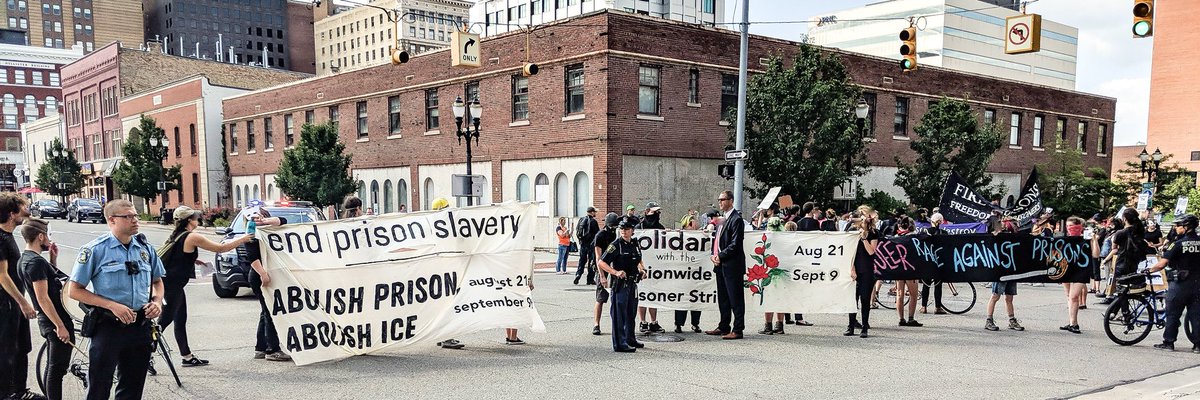 Hunger strikes begin in Texas and Ohio facilities. IWOC confirms work stoppage in South Carolina. Says only those in the ‘privilege unit’ are working.
Hunger strikes begin in Texas and Ohio facilities. IWOC confirms work stoppage in South Carolina. Says only those in the ‘privilege unit’ are working.
- Various call-in campaigns launched. Noise demo organized in Richmond, Virginia. Demo at Gainesville, Florida work camp organized to block work trucks. Rally in Boston, MA.
- Banner drop in Durham, NC. Rallies and march take place across the US. 70 march in New Haven, while a large rally of over 500 is held outside of San Quentin. Another rally is organized outside of the Indian State Prison, while another group mobilizes outside of Lee Correctional facility in South Carolina. Militant anarchist and antifascist march carrying banner in solidarity with prison strike clashes with police.
- Solidarity rally in Las Vegas.
August 27th
- Solidarity rally outside of Asheville, North Carolina at prison facility and outside of Hyde Correctional in North Carolina.
- Call-in campaigns begin. IWOC reports previous phone-zap campaign was great success. “Phone calls were nonstop.” Hunger strike begins in Wabash Valley in Indiana. Gainesville IWOC reports that there is confirmation of at least 5 Florida prisons reporting strike participation. Hunger strike in Tacoma continuing forward with 6 people. Jailhouse Lawyers report that prisoners across North and South Carolina are all engaging in work strikes and commissary boycotts.
- Banner drop in Oakland, rally outside of Florida Department of Corrections. Wheatpasting campaign in New York. New Haven solidarity graffiti.



